
Akka Cookbook
¥90.46
Learn how to use the Akka framework to build effective applications in Scala About This Book ? Covers a discussion on Lagom—the newest launched Akka framework that is built to create complex microservices easily ? The recipe approach of the book allows the reader to know important and independent concepts of Scala and Akka in a seamless manner ? Provides a comprehensive understanding of the Akka actor model and implementing it to create reactive web applications Who This Book Is For If you are a Scala developer who wants to build scalable and concurrent applications, then this book is for you. Basic knowledge of Akka will help you take advantage of this book. What You Will Learn ? Control an actor using the ContolAware mailbox ? Test a fault-tolerant application using the Akka test kit ? Create a parallel application using futures and agents ? Package and deploy Akka application inside Docker ? Deploy remote actors programmatically on different nodes ? Integrate Streams with Akka actors ? Install Lagom and create a Lagom project In Detail Akka is an open source toolkit that simplifies the construction of distributed and concurrent applications on the JVM. This book will teach you how to develop reactive applications in Scala using the Akka framework. This book will show you how to build concurrent, scalable, and reactive applications in Akka. You will see how to create high performance applications, extend applications, build microservices with Lagom, and more. We will explore Akka's actor model and show you how to incorporate concurrency into your applications. The book puts a special emphasis on performance improvement and how to make an application available for users. We also make a special mention of message routing and construction. By the end of this book, you will be able to create a high-performing Scala application using the Akka framework. Style and approach This highly practical recipe-based approach will allow you to build scalable, robust, and reactive applications using the Akka framework.
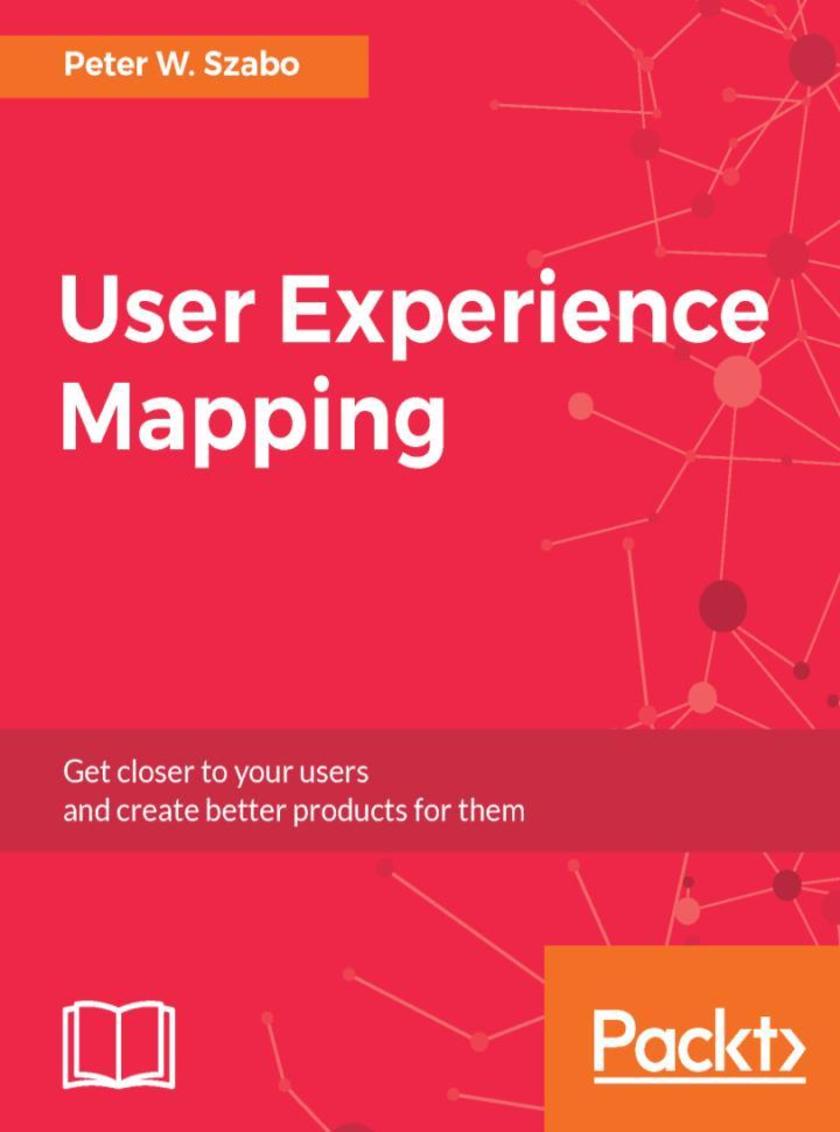
User Experience Mapping
¥71.93
Understand your users, gain strategic insights, and make your product development more efficient with user experience mapping About This Book ? Detailed guidance on the major types of User Experience Maps. ? Learn to gain strategic insights and improve communication with stakeholders . ? Get an idea on creating wireflows, mental model maps, ecosystem maps and solution maps Who This Book Is For This book is for Product Manager, Service Managers and Designers who are keen on learning the user experience mapping techniques. What You Will Learn ? Create and understand all common user experience map types. ? Use lab or remote user research to create maps and understand users better. ? Design behavioral change and represent it visually. ? Create 4D user experience maps, the “ultimate UX deliverable”. ? Capture many levels of interaction in a holistic view. ? Use experience mapping in an agile team, and learn how maps help in communicating within the team and with stakeholders. ? Become more user focused and help your organisation become user-centric. In Detail Do you want to create better products and innovative solutions? User Experience Maps will help you understand users, gain strategic insights and improve communication with stakeholders. Maps can also champion user-centricity within the organisation. Two advanced mapping techniques will be revealed for the first time in print, the behavioural change map and the 4D UX map. You will also explore user story maps, task models and journey maps. You will create wireflows, mental model maps, ecosystem maps and solution maps. In this book, the author will show you how to use insights from real users to create and improve your maps and your product. The book describes each major User Experience map type in detail. Starting with simple techniques based on sticky notes moving to more complex map types. In each chapter, you will solve a real-world problem with a map. The book contains detailed, beginner level tutorials on creating maps using different software products, including Adobe Illustrator, Balsamiq Mockups, Axure RP or Microsoft Word. Even if you don’t have access to any of those, each map type can also be drawn with pen and paper. Beyond creating maps, the book will also showcase communication techniques and workshop ideas. Although the book is not intended to be a comprehensive guide to modern user experience or product management, its novel ideas can help you create better solutions. You will also learn about the Kaizen-UX management framework, developed by the author, now used by many agencies and in-house UX teams in Europe and beyond. Buying this map will give you hundreds of hours worth of user experience knowledge, from one of the world’s leading UX consultants. It will change your users’ world for the better. If you are still not convinced, we have hidden some cat drawings in it, just in case. Style and approach An easy to understand guide, filled with real world use cases on how to plan, prioritize and visualize your project on customer experience
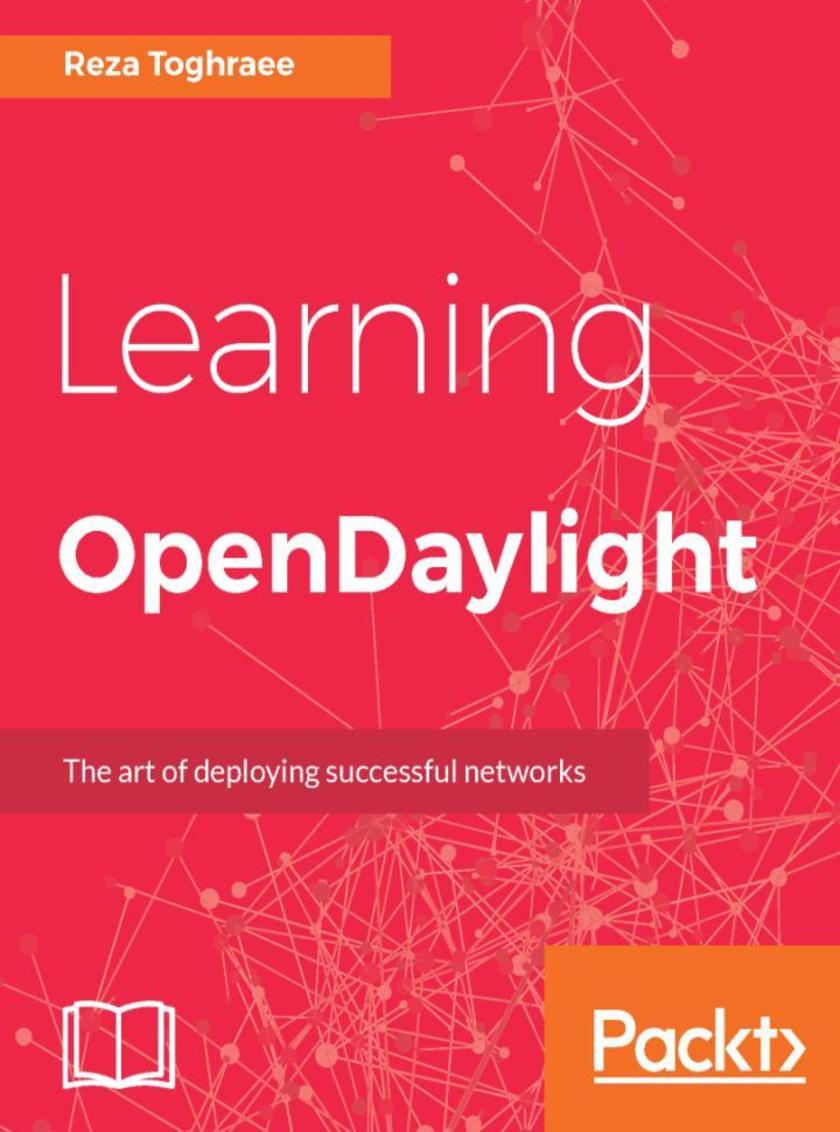
Learning OpenDaylight
¥80.65
A practical guide to building programmable networks using OpenDaylight About This Book ? Learn and understand how SDN controllers operate and integrate with networks; this book's step-by-step tutorials will give you a strong foundation in SDN, NVF, and OpenDayLight. ? Learn how to map legacy Layer 2/3 networking technologies in the SDN world ? Add new services and capabilities to your infrastructure and quickly adopt SDN and NFV within your organization with OpenDayLight. ? Integrate and manage software-defined networks efficiently in your organization. ? Build innovative network applications with OpenDayLight and save time and resources. Who This Book Is For This book targets network engineers, network programmers and developers, administrators, and anyone with some level of networking experience who'd like to deploy OpenDayLight effectively. Familiarity with the day-to-day operations of computer networks is expected What You Will Learn ? Transition from legacy networking to software-defined networking ? Learn how SDN controllers work and manage a network using southbound and northbound APIs ? Learn how to deploy the OpenDayLight SDN controller and integrate it with virtual switches ? Understand the basic design and operation of the OpenDaylight platform ? Build simple MD-SAL OpenDaylight applications ? Build applications on top of OpenDayLight to trigger network changes based on different events ? Integrate OpenStack with OpenDayLight to build a fully managed network ? Learn how to build a software-defined datacenter using NFV and service-chaining technologies In Detail OpenDaylight is an open source, software-defined network controller based on standard protocols. It aims to accelerate the adoption of Software-Defined Networking (SDN) and create a solid foundation for Network Functions Virtualization (NFV). SDN is a vast subject; many network engineers find it difficult to get started with using and operating different SDN platforms. This book will give you a practical bridge from SDN theory to the practical, real-world use of SDN in datacenters and by cloud providers. The book will help you understand the features and use cases for SDN, NFV, and OpenDaylight. NFV uses virtualization concepts and techniques to create virtual classes for node functions. Used together, SDN and NFV can elevate the standards of your network architecture; generic hardware-saving costs and the advanced and abstracted software will give you the freedom to evolve your network in the future without having to invest more in costly equipment. By the end of this book, you will have learned how to design and deploy OpenDaylight networks and integrate them with physical network switches. You will also have mastered basic network programming over the SDN fabric. Style and approach This is a step-by-step tutorial aimed at getting you up-to-speed with OpenDayLight and ready to adopt it for your SDN (Software-Defined Networking) and NFV (Network Functions Virtualization) ecosystem.
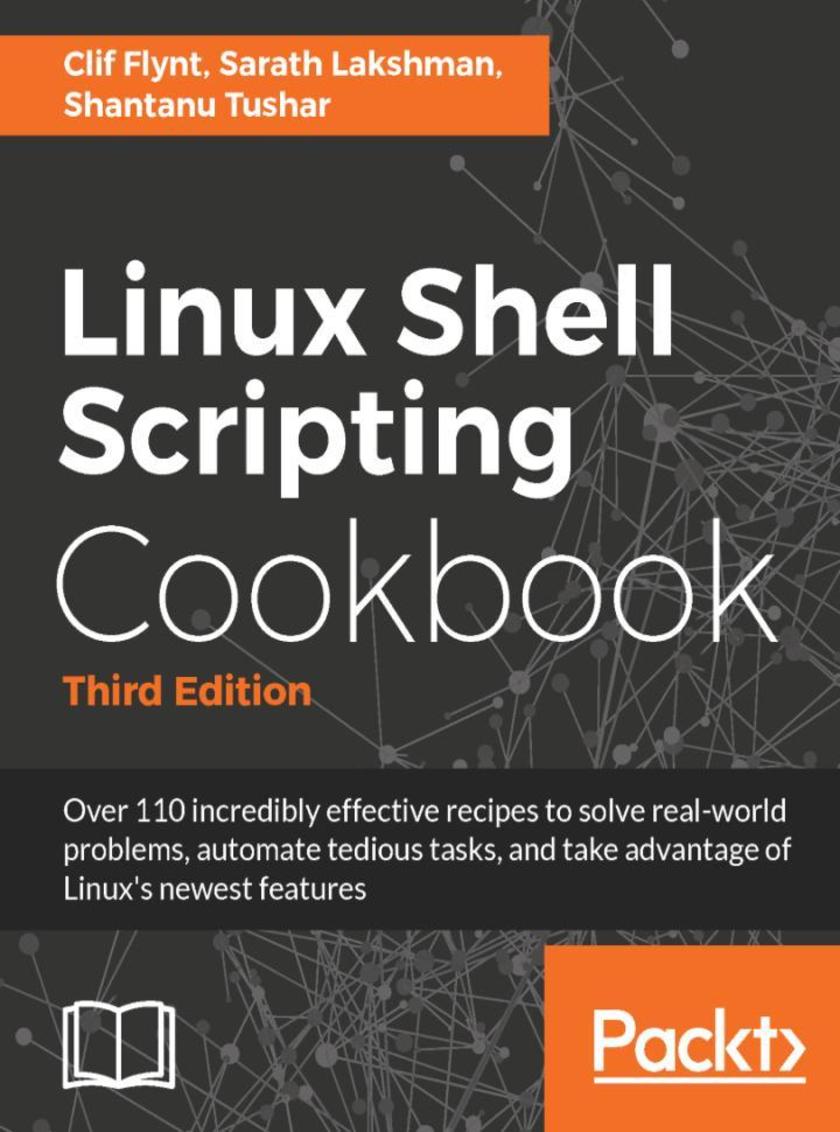
Linux Shell Scripting Cookbook - Third Edition
¥90.46
Do amazing things with the shell About This Book ? Become an expert in creating powerful shell *s and explore the full possibilities of the shell ? Automate any administrative task you could imagine, with shell *s ? Packed with easy-to-follow recipes on new features on Linux, particularly, Debian-based, to help you accomplish even the most complex tasks with ease Who This Book Is For If you are a beginner or an intermediate Linux user who wants to master the skill of quickly writing *s and automate tasks without reading the entire man pages, then this book is for you. You can start writing *s and one-liners by simply looking at the relevant recipe and its de*ions without any working knowledge of shell *ing or Linux. Intermediate / advanced users, system administrators / developers, and programmers can use this book as a reference when they face problems while coding. What You Will Learn ? Interact with websites via *s ? Write shell *s to mine and process data from the Web ? Automate system backups and other repetitive tasks with crontab ? Create, compress, and encrypt archives of your critical data. ? Configure and monitor Ethernet and wireless networks ? Monitor and log network and system activity ? Tune your system for optimal performance ? Improve your system's security ? Identify resource hogs and network bottlenecks ? Extract audio from video files ? Create web photo albums ? Use git or fossil to manage revision control and interact with FOSS projects ? Create and maintain Linux containers and Virtual Machines ? Run a private Cloud server In Detail The shell is the most powerful tool your computer provides. Despite having it at their fingertips, many users are unaware of how much the shell can accomplish. Using the shell, you can generate databases and web pages from sets of files, automate monotonous admin tasks such as system backups, monitor your system's health and activity, identify network bottlenecks and system resource hogs, and more. This book will show you how to do all this and much more. This book, now in its third edition, describes the exciting new features in the newest Linux distributions to help you accomplish more than you imagine. It shows how to use simple commands to automate complex tasks, automate web interactions, download videos, set up containers and cloud servers, and even get free SSL certificates. Starting with the basics of the shell, you will learn simple commands and how to apply them to real-world issues. From there, you'll learn text processing, web interactions, network and system monitoring, and system tuning. Software engineers will learn how to examine system applications, how to use modern software management tools such as git and fossil for their own work, and how to submit patches to open-source projects. Finally, you'll learn how to set up Linux Containers and Virtual machines and even run your own Cloud server with a free SSL Certificate from letsencrypt.org. Style and approach This book will take you through useful real-world recipes designed to make your daily life easier when working with the shell.
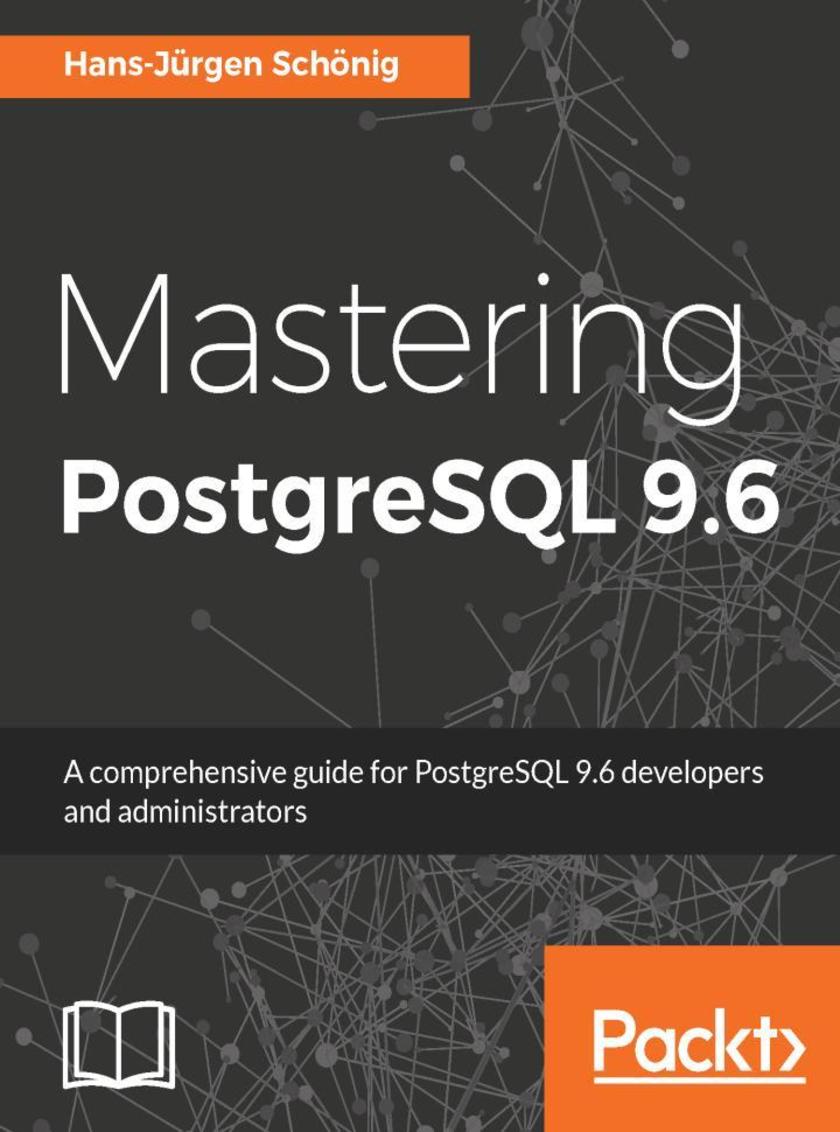
Mastering PostgreSQL 9.6
¥99.18
Master the capabilities of PostgreSQL 9.6 to efficiently manage and maintain your database About This Book ? Your one-stop guide to mastering the advanced concepts in PostgreSQL with ease ? Master query optimization, replication, and high availability with PostgreSQL ? Extend the functionalities of PostgreSQL to suit your organizational needs with minimum effort Who This Book Is For If you are a PostgreSQL data architect or an administrator who wants to understand how to implement advanced functionalities and master complex administrative tasks with PostgreSQL, then this book is perfect for you. Prior experience of administrating a PostgreSQL database and a working knowledge of SQL is required to make the best use of this book. What You Will Learn ? Get to grips with the advanced features of PostgreSQL 9.6 and handle advanced SQL ? Make use of the indexing features in PostgreSQL and fine-tune the performance of your queries ? Work with the stored procedures and manage backup and recovery ? Master the replication and failover techniques ? Troubleshoot your PostgreSQL instance for solutions to the common and not-so-common problems ? Learn how to migrate your database from MySQL and Oracle to PostgreSQL without any hassle In Detail PostgreSQL is an open source database used for handling large datasets (Big Data) and as a JSON document database. It also has applications in the software and web domains. This book will enable you to build better PostgreSQL applications and administer databases more efficiently. We begin by explaining the advanced database design concepts in PostgreSQL 9.6, along with indexing and query optimization. You will also see how to work with event triggers and perform concurrent transactions and table partitioning, along with exploring SQL and server tuning. We will walk you through implementing advanced administrative tasks such as server maintenance and monitoring, replication, recovery and high availability, and much more. You will understand the common and not-so-common troubleshooting problems and how you can overcome them. By the end of this book, you will have an expert-level command of the advanced database functionalities and will be able to implement advanced administrative tasks with PostgreSQL. Style and Approach This book is a comprehensive guide covering all the concepts you need to master PostgreSQL. Packed with hands-on examples, tips and tricks, even the most advanced concepts are explained in a very easy-to-follow manner. Every chapter in the book does not only focus on how each task is performed, but also why.
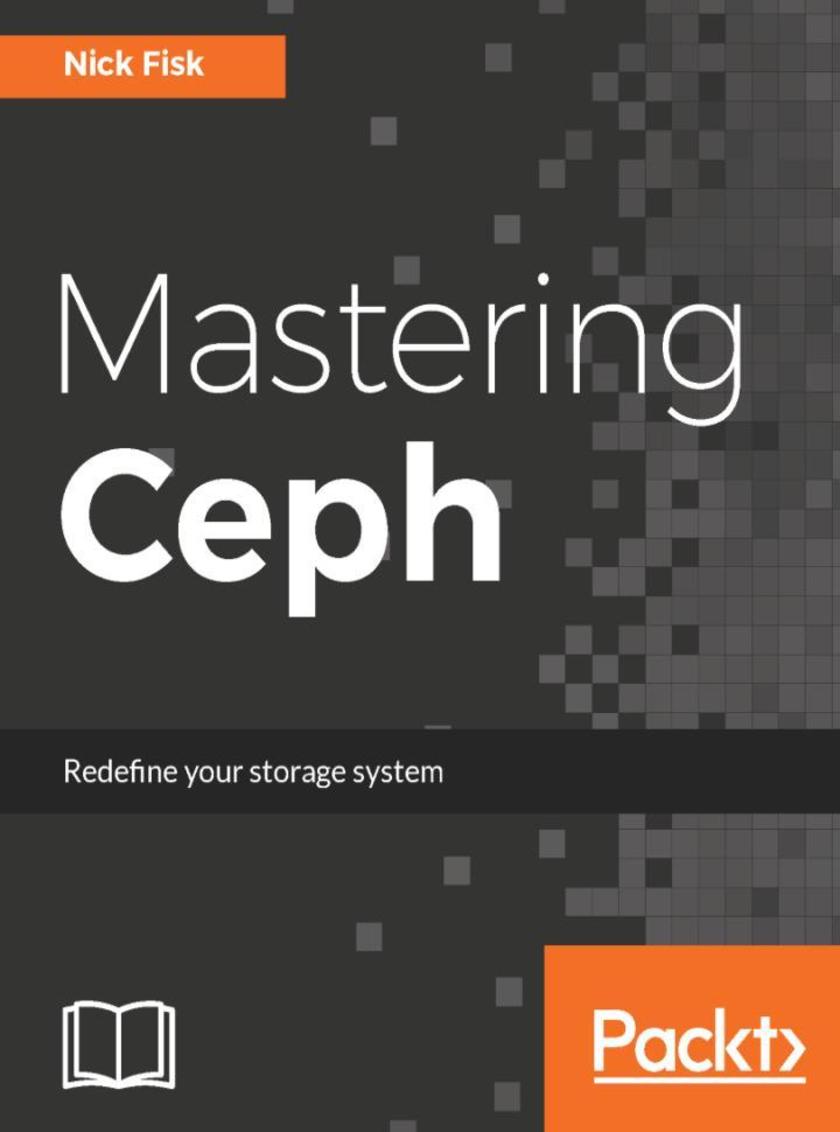
Mastering Ceph
¥80.65
Deep dive into the unified, distributed storage system in order to provide excellent performance About This Book ? Leverage Ceph's advanced features such as erasure coding, tiering, and Bluestore ? Solve large-scale problems with Ceph as a tool by understanding its strengths and weaknesses to develop the best solutions ? A practical guide that covers engaging use cases to help you use advanced features of Ceph effectively Who This Book Is For If you are a developer and an administrator who has deployed a Ceph cluster before and are curious about some of the most advanced features in order to improve performance then this book is for you What You Will Learn ?Know when and how to use some of Ceph's advanced new features ? Set up a test cluster with Ansible and some virtual machines using VirtualBox and Vagrant ?Develop novel solutions to massive problems with librados and shared object classes. ? Choose intelligent parameters for an erasure coded pool and set it up. ? Configure the Bluestore settings and see how they interact with different hardware configurations. ? Keep Ceph running through thick and thin with tuning, monitoring and disaster recovery advice. In Detail Mastering Ceph covers all that you need to know to use Ceph effectively. Starting with design goals and planning steps that should be undertaken to ensure successful deployments, you will be guided through to setting up and deploying the Ceph cluster, with the help of orchestration tools. Key areas of Ceph including Bluestore, Erasure coding and cache tiering will be covered with help of examples. Development of applications which use Librados and Distributed computations with shared object classes are also covered. A section on tuning will take you through the process of optimisizing both Ceph and its supporting infrastructure. Finally, you will learn to troubleshoot issues and handle various scenarios where Ceph is likely not to recover on its own. By the end of the book, you will be able to successfully deploy and operate a resilient high performance Ceph cluster. Style and approach A practical guide which has each chapter explaining the concept, sharing tips and tricks and a use case to implement the most powerful features of Ceph
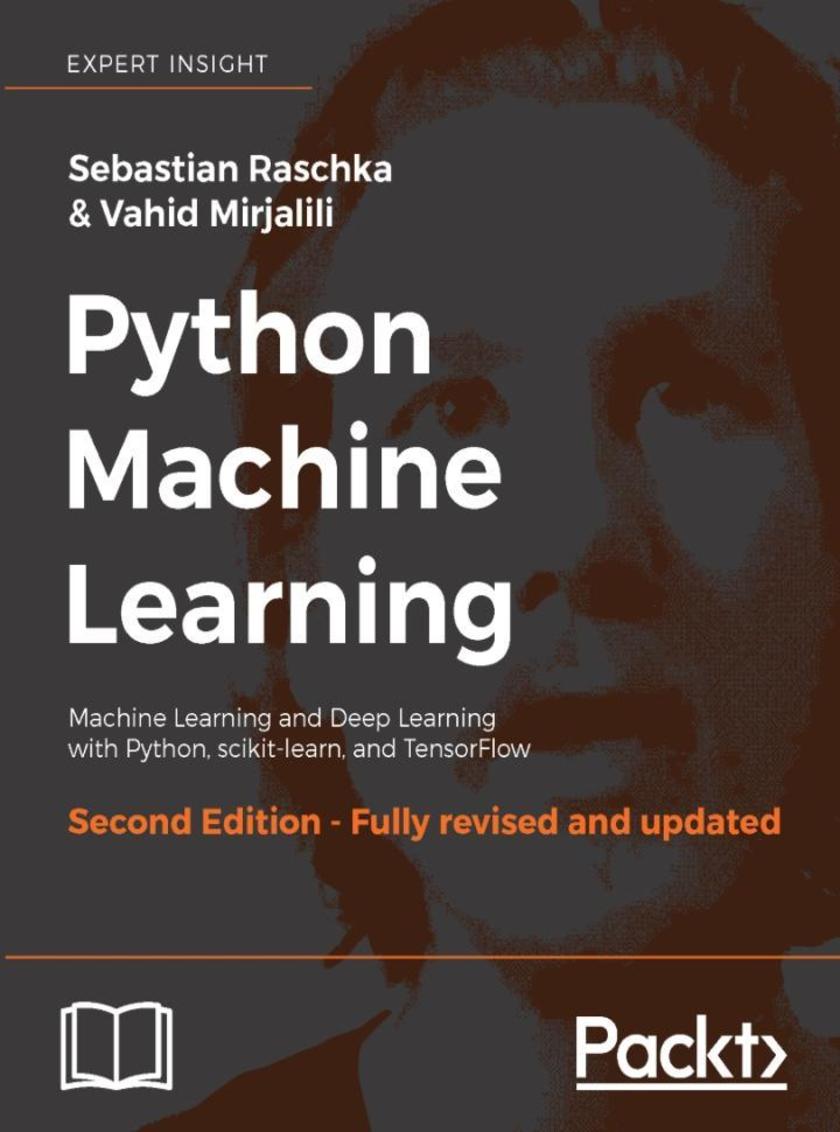
Python Machine Learning - Second Edition
¥71.93
Unlock modern machine learning and deep learning techniques with Python by using the latest cutting-edge open source Python libraries. About This Book ? Second edition of the bestselling book on Machine Learning ? A practical approach to key frameworks in data science, machine learning, and deep learning ? Use the most powerful Python libraries to implement machine learning and deep learning ? Get to know the best practices to improve and optimize your machine learning systems and algorithms Who This Book Is For If you know some Python and you want to use machine learning and deep learning, pick up this book. Whether you want to start from scratch or extend your machine learning knowledge, this is an essential and unmissable resource. Written for developers and data scientists who want to create practical machine learning and deep learning code, this book is ideal for developers and data scientists who want to teach computers how to learn from data. What You Will Learn ? Understand the key frameworks in data science, machine learning, and deep learning ? Harness the power of the latest Python open source libraries in machine learning ? Explore machine learning techniques using challenging real-world data ? Master deep neural network implementation using the TensorFlow library ? Learn the mechanics of classification algorithms to implement the best tool for the job ? Predict continuous target outcomes using regression analysis ? Uncover hidden patterns and structures in data with clustering ? Delve deeper into textual and social media data using sentiment analysis In Detail Machine learning is eating the software world, and now deep learning is extending machine learning. Understand and work at the cutting edge of machine learning, neural networks, and deep learning with this second edition of Sebastian Raschka’s bestselling book, Python Machine Learning. Thoroughly updated using the latest Python open source libraries, this book offers the practical knowledge and techniques you need to create and contribute to machine learning, deep learning, and modern data analysis. Fully extended and modernized, Python Machine Learning Second Edition now includes the popular TensorFlow deep learning library. The scikit-learn code has also been fully updated to include recent improvements and additions to this versatile machine learning library. Sebastian Raschka and Vahid Mirjalili’s unique insight and expertise introduce you to machine learning and deep learning algorithms from scratch, and show you how to apply them to practical industry challenges using realistic and interesting examples. By the end of the book, you’ll be ready to meet the new data analysis opportunities in today’s world. If you’ve read the first edition of this book, you’ll be delighted to find a new balance of classical ideas and modern insights into machine learning. Every chapter has been critically updated, and there are new chapters on key technologies. You’ll be able to learn and work with TensorFlow more deeply than ever before, and get essential coverage of the Keras neural network library, along with the most recent updates to scikit-learn. Style and Approach Python Machine Learning Second Edition takes a practical, hands-on coding approach so you can learn about machine learning by coding with Python. This book moves fluently between the theoretical principles of machine learning and the practical details of implementation with Python.
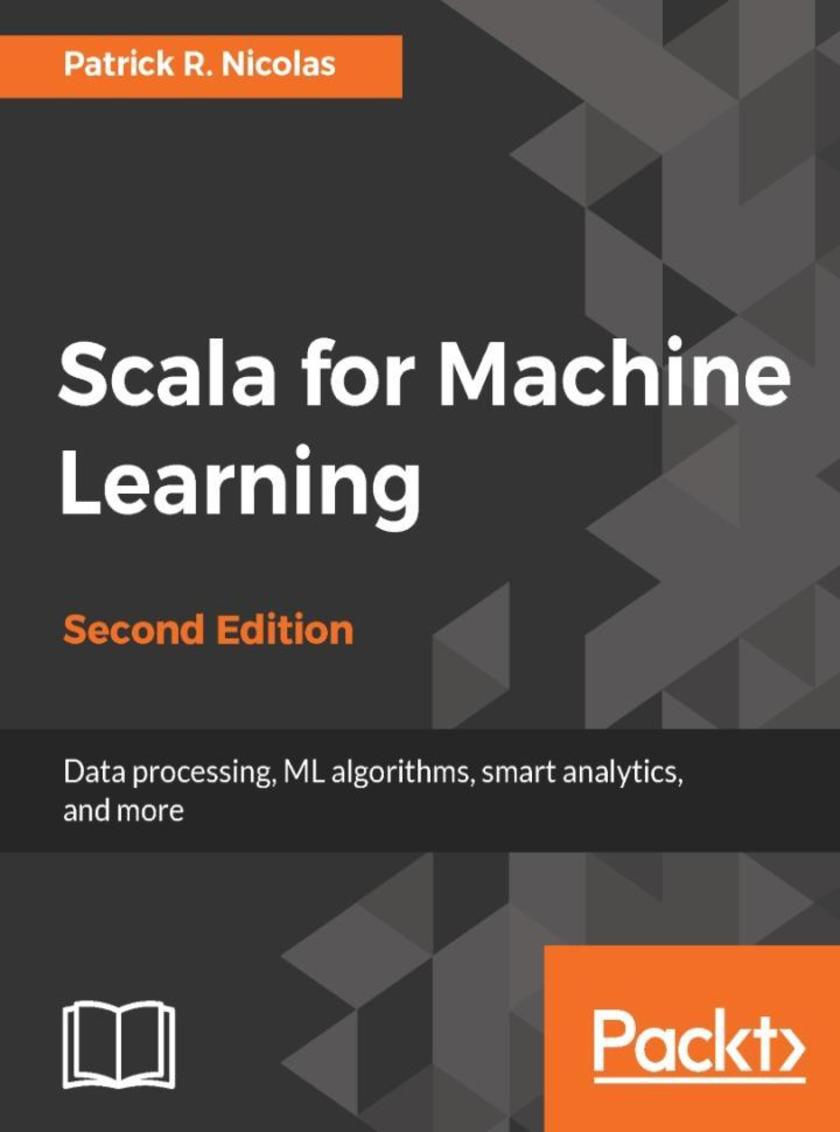
Scala for Machine Learning - Second Edition
¥107.90
Leverage Scala and Machine Learning to study and construct systems that can learn from data About This Book ? Explore a broad variety of data processing, machine learning, and genetic algorithms through diagrams, mathematical formulation, and updated source code in Scala ? Take your expertise in Scala programming to the next level by creating and customizing AI applications ? Experiment with different techniques and evaluate their benefits and limitations using real-world applications in a tutorial style Who This Book Is For If you’re a data scientist or a data analyst with a fundamental knowledge of Scala who wants to learn and implement various Machine learning techniques, this book is for you. All you need is a good understanding of the Scala programming language, a basic knowledge of statistics, a keen interest in Big Data processing, and this book! What You Will Learn ? Build dynamic workflows for scientific computing ? Leverage open source libraries to extract patterns from time series ? Write your own classification, clustering, or evolutionary algorithm ? Perform relative performance tuning and evaluation of Spark ? Master probabilistic models for sequential data ? Experiment with advanced techniques such as regularization and kernelization ? Dive into neural networks and some deep learning architecture ? Apply some basic multiarm-bandit algorithms ? Solve big data problems with Scala parallel collections, Akka actors, and Apache Spark clusters ? Apply key learning strategies to a technical analysis of financial markets In Detail The discovery of information through data clustering and classification is becoming a key differentiator for competitive organizations. Machine learning applications are everywhere, from self-driving cars, engineering design, logistics, manufacturing, and trading strategies, to detection of genetic anomalies. The book is your one stop guide that introduces you to the functional capabilities of the Scala programming language that are critical to the creation of machine learning algorithms such as dependency injection and implicits. You start by learning data preprocessing and filtering techniques. Following this, you'll move on to unsupervised learning techniques such as clustering and dimension reduction, followed by probabilistic graphical models such as Na?ve Bayes, hidden Markov models and Monte Carlo inference. Further, it covers the discriminative algorithms such as linear, logistic regression with regularization, kernelization, support vector machines, neural networks, and deep learning. You’ll move on to evolutionary computing, multibandit algorithms, and reinforcement learning. Finally, the book includes a comprehensive overview of parallel computing in Scala and Akka followed by a de*ion of Apache Spark and its ML library. With updated codes based on the latest version of Scala and comprehensive examples, this book will ensure that you have more than just a solid fundamental knowledge in machine learning with Scala. Style and approach This book is designed as a tutorial with hands-on exercises using technical analysis of financial markets and corporate data. The approach of each chapter is such that it allows you to understand key concepts easily.
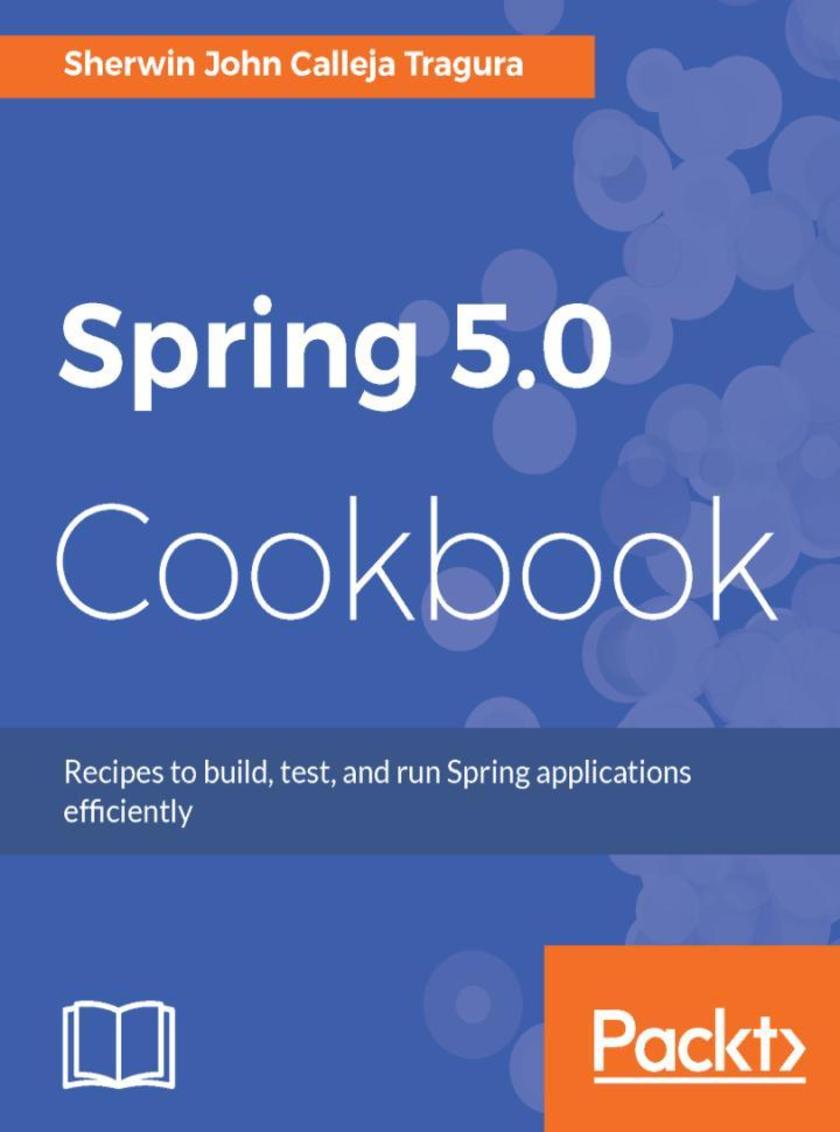
Spring 5.0 Cookbook
¥90.46
Over 100 hands-on recipes to build web applications easily and efficiently IN Spring 5.0 About This Book ? Solve real-world problems using the latest features of the Spring framework like Reactive Streams and the Functional Web Framework. ? Learn how to use dependency injection and aspect-oriented programming to write compartmentalized and testable code. ? Understand when to choose between Spring MVC and Spring Web Reactive for your projects Who This Book Is For Java developers who would like to gain in-depth knowledge of how to overcome problems that they face while developing great Spring applications. It will also cater to Spring enthusiasts, users and experts who need an arena for comparative analysis, new ideas and inquiries on some details regarding Spring 5.0 and its previous releases. A basic knowledge of Spring development is essential What You Will Learn ? Understand how functional programming and concurrency in JDK 1.9 works, and how it will affect Spring 5.0 ? Learn the importance and application of reactive programming in creating services, and also the process of creating asynchronous MVC applications ? Implement different Spring Data modules ? Integrate Spring Security to the container ? Create applications and deploy using Spring Boot ? Conceptualize the architecture behind Microservices and learn the details of its implementation ? Create different test cases for the components of Spring 5.0 components In Detail The Spring framework has been the go-to framework for Java developers for quite some time. It enhances modularity, provides more readable code, and enables the developer to focus on developing the application while the underlying framework takes care of transaction APIs, remote APIs, JMX APIs, and JMS APIs. The upcoming version of the Spring Framework has a lot to offer, above and beyond the platform upgrade to Java 9, and this book will show you all you need to know to overcome common to advanced problems you might face. Each recipe will showcase some old and new issues and solutions, right from configuring Spring 5.0 container to testing its components. Most importantly, the book will highlight concurrent processes, asynchronous MVC and reactive programming using Reactor Core APIs. Aside from the core components, this book will also include integration of third-party technologies that are mostly needed in building enterprise applications. By the end of the book, the reader will not only be well versed with the essential concepts of Spring, but will also have mastered its latest features in a solution-oriented manner. Style and Approach This book follows a cookbook style approach, presenting a problem and showing you how to overcome it with useful recipes. The examples provided will help you code along as you learn.
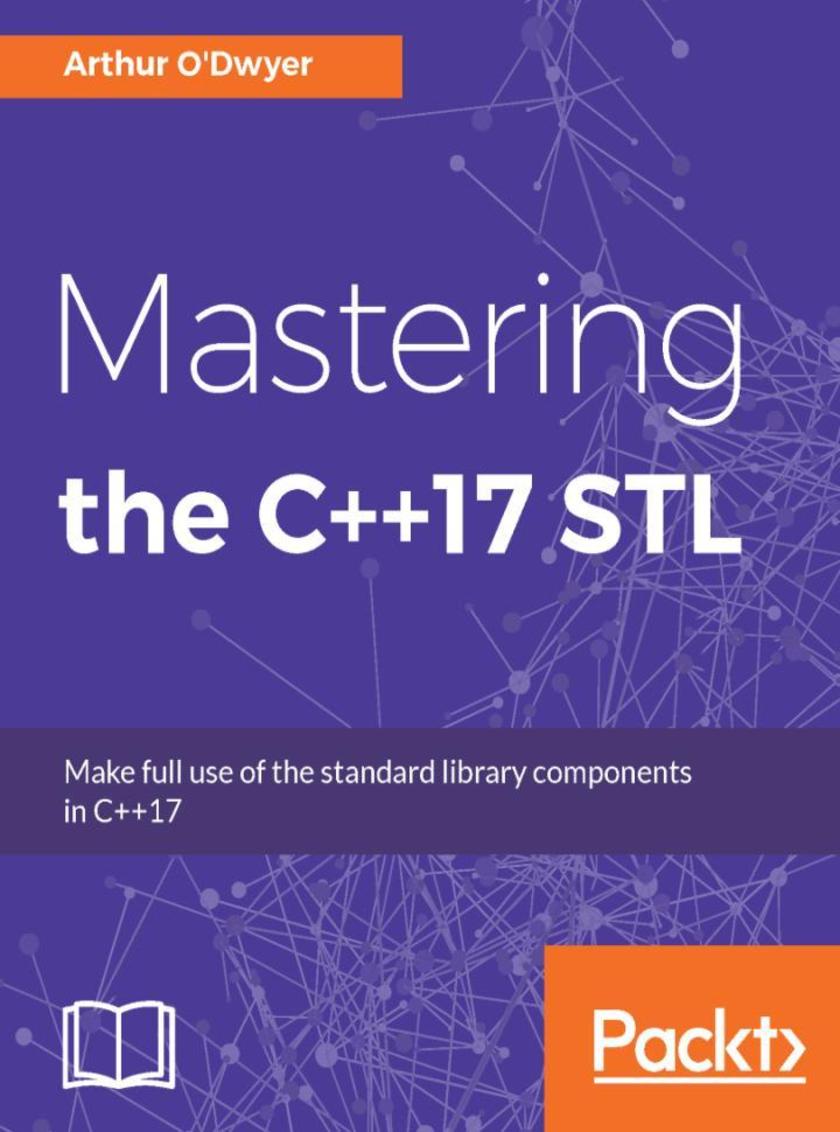
Mastering the C++17 STL
¥80.65
This book breaks down the C++ STL, teaching you how to extract its gems and apply them to your programming. About This Book ? Boost your productivity as a C++ developer with the latest features of C++17 ? Develop high-quality, fast, and portable applications with the varied features of the STL ? Migrate from older versions (C++11, C++14) to C++17 Who This Book Is For This book is for developers who would like to master the C++ STL and make full use of its components. Prior C++ knowledge is assumed. What You Will Learn ? Make your own iterator types, allocators, and thread pools. ? Master every standard container and every standard algorithm. ? Improve your code by replacing new/delete with smart pointers. ? Understand the difference between monomorphic algorithms, polymorphic algorithms, and generic algorithms. ? Learn the meaning and applications of vocabulary type, product type and sum type. In Detail Modern C++ has come a long way since 2011. The latest update, C++17, has just been ratified and several implementations are on the way. This book is your guide to the C++ standard library, including the very latest C++17 features. The book starts by exploring the C++ Standard Template Library in depth. You will learn the key differences between classical polymorphism and generic programming, the foundation of the STL. You will also learn how to use the various algorithms and containers in the STL to suit your programming needs. The next module delves into the tools of modern C++. Here you will learn about algebraic types such as std::optional, vocabulary types such as std::function, smart pointers, and synchronization primitives such as std::atomic and std::mutex. In the final module, you will learn about C++'s support for regular expressions and file I/O. By the end of the book you will be proficient in using the C++17 standard library to implement real programs, and you'll have gained a solid understanding of the library's own internals. Style and approach This book takes a concise but comprehensive approach to explaining and applying the C++ STL, one feature at a time.
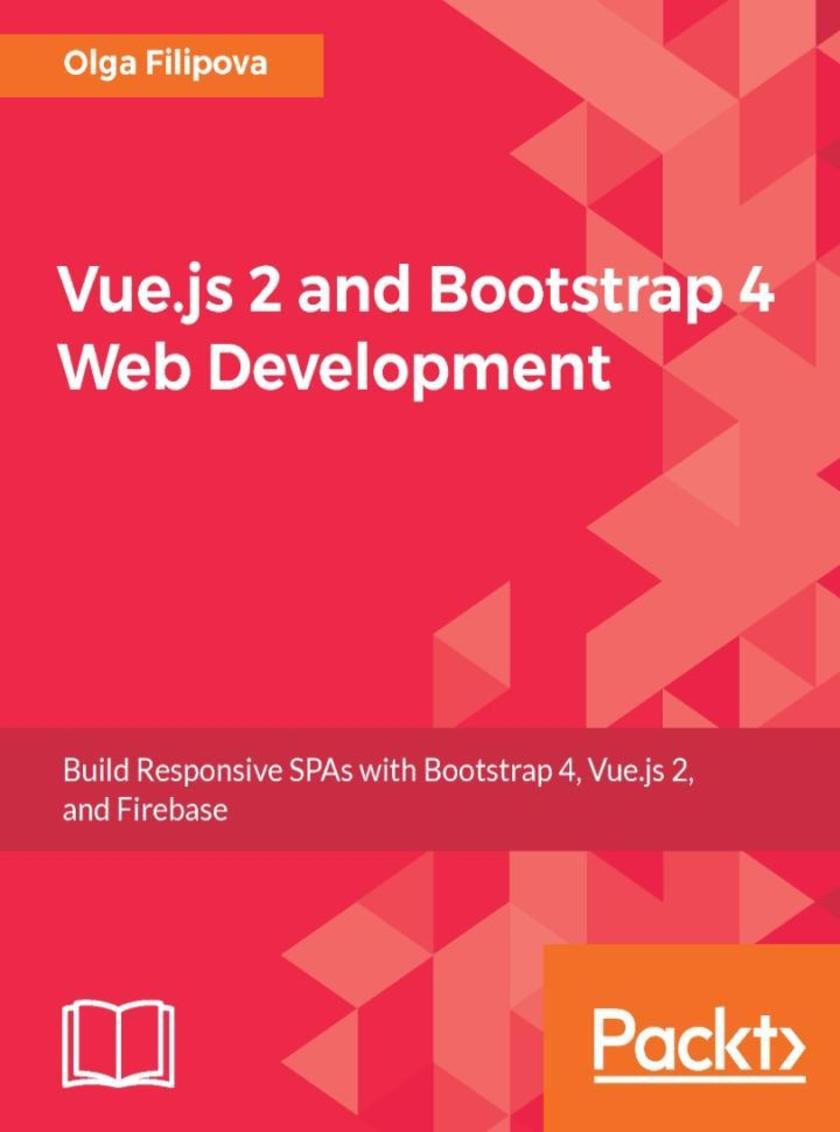
Vue.js 2 and Bootstrap 4 Web Development
¥80.65
Learn how to combine Bootstrap with Vue.js to build responsive web applications. About This Book ? Build applications with a good architecture and clean UI with Vue.js and Bootstrap ? Understand Bootstrap components and learn to integrate them with the Vue.js structure ? Build, deploy, and test your code with various utility tools provided by Vue.js Who This Book Is For This book is for JavaScript programmers who are new to web frameworks and want to start learning it by developing interactive and responsive web applications. What You Will Learn ? Create and build web applications using Vue.js, Webpack, and Nuxt.js ? Combine Bootstrap components with Vue.js' power to enrich your web applications with reusable elements ? Connect the Vuex state management architecture to the Firebase cloud backend to persist and manage application data ? Explore the new grid system of Bootstrap 4 along with the far simpler directives in Vue.js ? Test Vue applications using Jest ? Authenticate your application using Bootstrap's forms, Vue.js' reactivity, and Firebase's authentication API ? Deploy your application using Firebase, which provides Backend as a Service In Detail In this book, we will build a full stack web application right from scratch up to its deployment. We will start by building a small introduction application and then proceed to the creation of a fully functional, dynamic responsive web application called ProFitOro. In this application, we will build a Pomodoro timer combined with office workouts. Besides the Pomodoro timer and ProFitOro workouts will enable authentication and collaborative content management. We will explore topics such as Vue reactive data binding, reusable components, routing, and Vuex store along with its state, actions, mutations, and getters. We will create Vue applications using both webpack and Nuxt.js templates while exploring cool hot Nuxt.js features such as code splitting and server-side rendering. We will use Jest to test this application, and we will even revive some trigonometry from our secondary school! While developing the app, you will go through the new grid system of Bootstrap 4 along with Vue.js’ directives. We will connect Vuex store to the Firebase real-time database, data storage, and authentication APIs and use this data later inside the application’s reactive components. Finally, we will quickly deploy our application using the Firebase hosting mechanism. Style and Approach Step-by-step tutorial

Understanding Software
¥54.49
Software legend Max Kanat-Alexander shows you how to succeed as a developer by embracing simplicity, with forty-three essays that will help you really understand the software you work with. About This Book ? Read and enjoy the superlative writing and insights of the legendary Max Kanat-Alexander ? Learn and reflect with Max on how to bring simplicity to your software design principles ? Discover the secrets of rockstar programmers and how to also just suck less as a programmer Who This Book Is For Understanding Software is for every programmer, or anyone who works with programmers. If life is feeling more complex than it should be, and you need to touch base with some clear thinking again, this book is for you. If you need some inspiration and a reminder of how to approach your work as a programmer by embracing some simplicity in your work again, this book is for you. If you’re one of Max’s followers already, this book is a collection of Max’s thoughts selected and curated for you to enjoy and reflect on. If you’re new to Max’s work, and ready to connect with the power of simplicity again, this book is for you! What You Will Learn ? See how to bring simplicity and success to your programming world ? Clues to complexity - and how to build excellent software ? Simplicity and software design ? Principles for programmers ? The secrets of rockstar programmers ? Max’s views and interpretation of the Software industry ? Why Programmers suck and how to suck less as a programmer ? Software design in two sentences ? What is a bug? Go deep into debugging In Detail In Understanding Software, Max Kanat-Alexander, Technical Lead for Code Health at Google, shows you how to bring simplicity back to computer programming. Max explains to you why programmers suck, and how to suck less as a programmer. There’s just too much complex stuff in the world. Complex stuff can’t be used, and it breaks too easily. Complexity is stupid. Simplicity is smart. Understanding Software covers many areas of programming, from how to write simple code to profound insights into programming, and then how to suck less at what you do! You'll discover the problems with software complexity, the root of its causes, and how to use simplicity to create great software. You'll examine debugging like you've never done before, and how to get a handle on being happy while working in teams. Max brings a selection of carefully crafted essays, thoughts, and advice about working and succeeding in the software industry, from his legendary blog Code Simplicity. Max has crafted forty-three essays which have the power to help you avoid complexity and embrace simplicity, so you can be a happier and more successful developer. Max's technical knowledge, insight, and kindness, has earned him code guru status, and his ideas will inspire you and help refresh your approach to the challenges of being a developer. Style and approach Understanding Software is a new selection of carefully chosen and crafted essays from Max Kanat-Alexander's legendary blog call Code Simplicity. Max’s writing and thoughts are great to sit and read cover to cover, or if you prefer you can drop in and see what you discover new every single time!
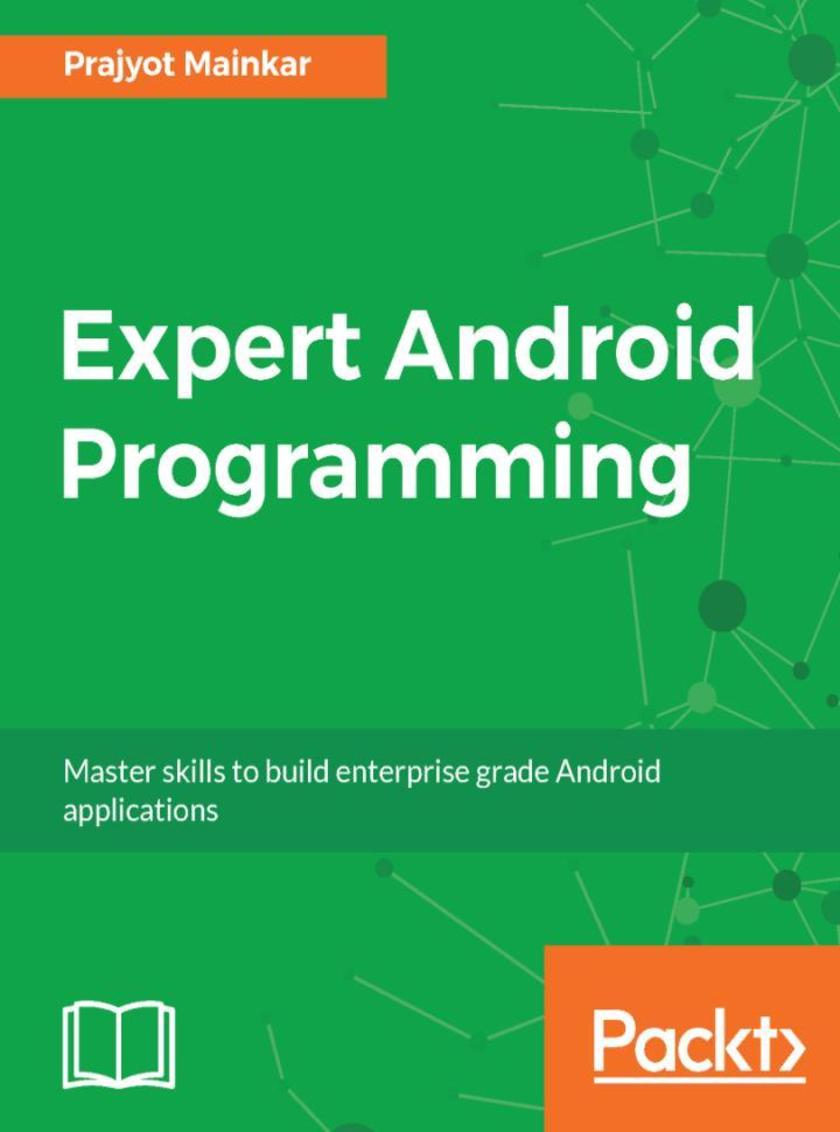
Expert Android Programming
¥80.65
Become a pro with the latest Android SDK and create state of the art applications for Android. About This Book ? Dive deep into Android development with practical hands on examples to help you in each stage. ? Develop smart professional grade apps for the latest Android N version and become a pro android developer. ? Unclog your development highway by utilising the industry standard best practices techniques. Who This Book Is For This book is for mobile developers having some expertise in building android apps and who wish to now take a leap into building complex app such as Zomato, using latest Android N power of Google. What You Will Learn ? Building UI/UX following best industry practices ? Development of Zomato Clone ? Measure and improve app performance ? Improving app using test mechanisms ? Bringing the app live on the play store In Detail Android O brings a number of important changes for the users as well as the developers. If you want to create smart android applications which are fast, lightweight and also highly efficient then this is the book that will solve all your problems. You will create a complex enterprise grade app in this book. You will get a quick refresher of the latest android SDK and how to configure your development environment. Then you will move onto creating app layouts, component and module building, creating smart and efficient UIs. The most important part of a modern day app is how real time they are. With this book, you will create a smooth back-end for your app, ensure dynamic and real time communication between different app layers. As we move on, you will learn to leverage the different Android APIs and create an efficient SQLite data layer for your apps. You will implement effective testing techniques to make your app reliable and robust and finally you will learn to deploy it efficiently. The multiple stages of android development will also be simplified by giving you an industry standard set of best practices. Style and approach This book will have a dedicated practical tutorial style approach with focus on professional & enterprise grade android app development. The examples in each chapter will be modular and will also help you to create a complete fully fueatured android app by the end of the book.
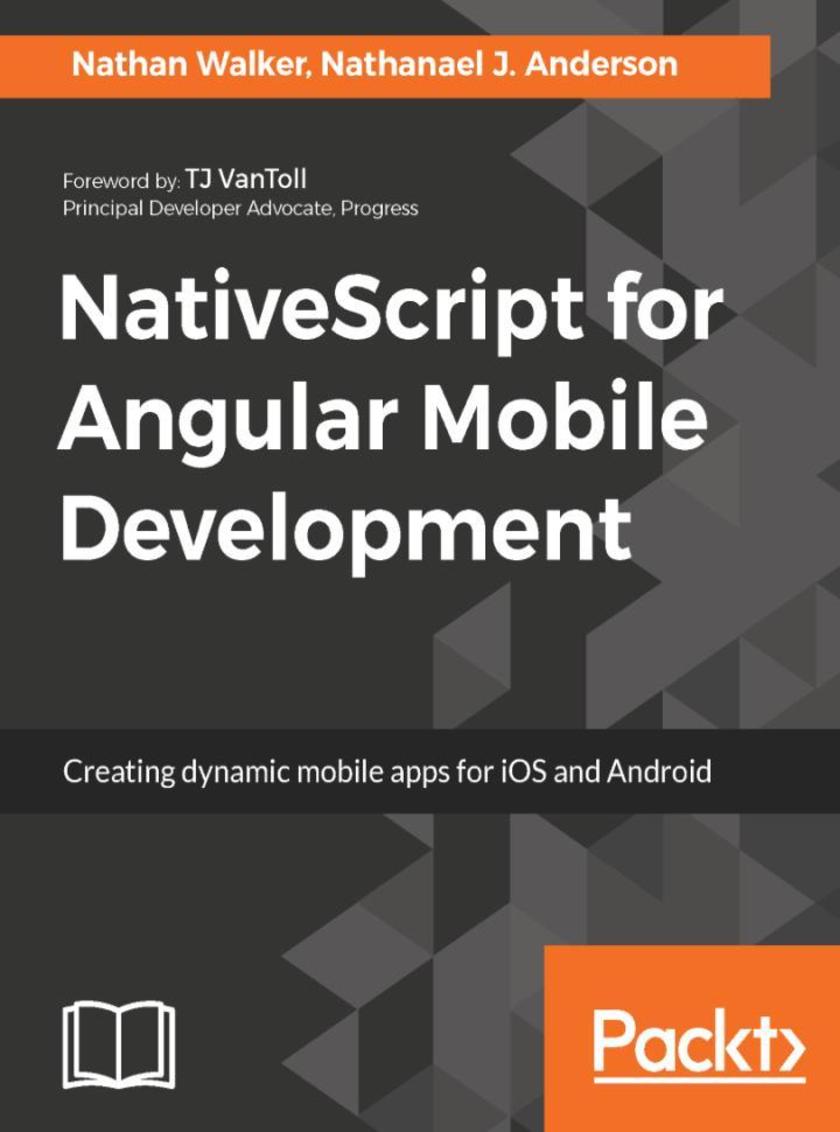
NativeScript for Angular Mobile Development
¥80.65
Learn NativeScript to build native mobile applications with Angular, TypeScript, JavaScript About This Book ? Power packed hands-on guide to help you become pro-efficient with NativeScript ? Harness the power of your web development skills with JavaScript and Angular to build cross-platform mobile apps ? Create highly maintainable and feature-rich apps with TypeScript and NativeScript APIs Who This Book Is For This book assumes you have a general understanding of TypeScript, have heard of NativeScript and know what it's about, and are familiar with Angular (2.0). You don't need to be an expert in any of these technologies, but having some sense of them before reading is recommended this book, which is ideal for intermediate to advanced users. What You Will Learn ? Bootstrap a NativeScript for Angular app ? Best practices for project organization ? Style your app with CSS/SASS ? Use Angular together with NativeScript to create cross-platform mobile apps ? Take advantage of powerful Angular features, such as Dependency Injection, Components, Directives, Pipes, and NgModules right within your NativeScript apps ?Gain insight into great project organization and best practices ?Use Objective C/Swift and Java APIs directly from TypeScript ?Use rich framework features and third-party plugins ?Style your app with CSS/SASS ?Integrate @ngrx/store + @ngrx/effects to help with state management ?Test your app with Karma and Appium In Detail NativeScript is an open source framework that is built by Progress in order to build truly native mobile apps with TypeScript, JavaScript or just Angular which is an open source framework built by Google that offers declarative templates, dependency injection, and fully featured modules to build rich applications. Angular’s versatile view handling architecture allows your views to be rendered as highly performant UI components native to iOS and Android mobile platforms. This decoupling of the view rendering layer in Angular combined with the power of native APIs with NativeScript have together created the powerful and exciting technology stack of NativeScript for Angular. This book focuses on the key concepts that you will need to know to build a NativeScript for Angular mobile app for iOS and Android. We’ll build a fun multitrack recording studio app, touching on powerful key concepts from both technologies that you may need to know when you start building an app of your own. The structure of the book takes the reader from a void to a deployed app on both the App Store and Google Play, serving as a reference guide and valuable tips/tricks handbook. By the end of this book, you’ll know majority of key concepts needed to build a successful NativeScript for Angular app. Style and approach This step-by-step advanced tutorial focuses on the key concepts you need to know to build a NativeScript for Angular mobile app for iOS and Android.
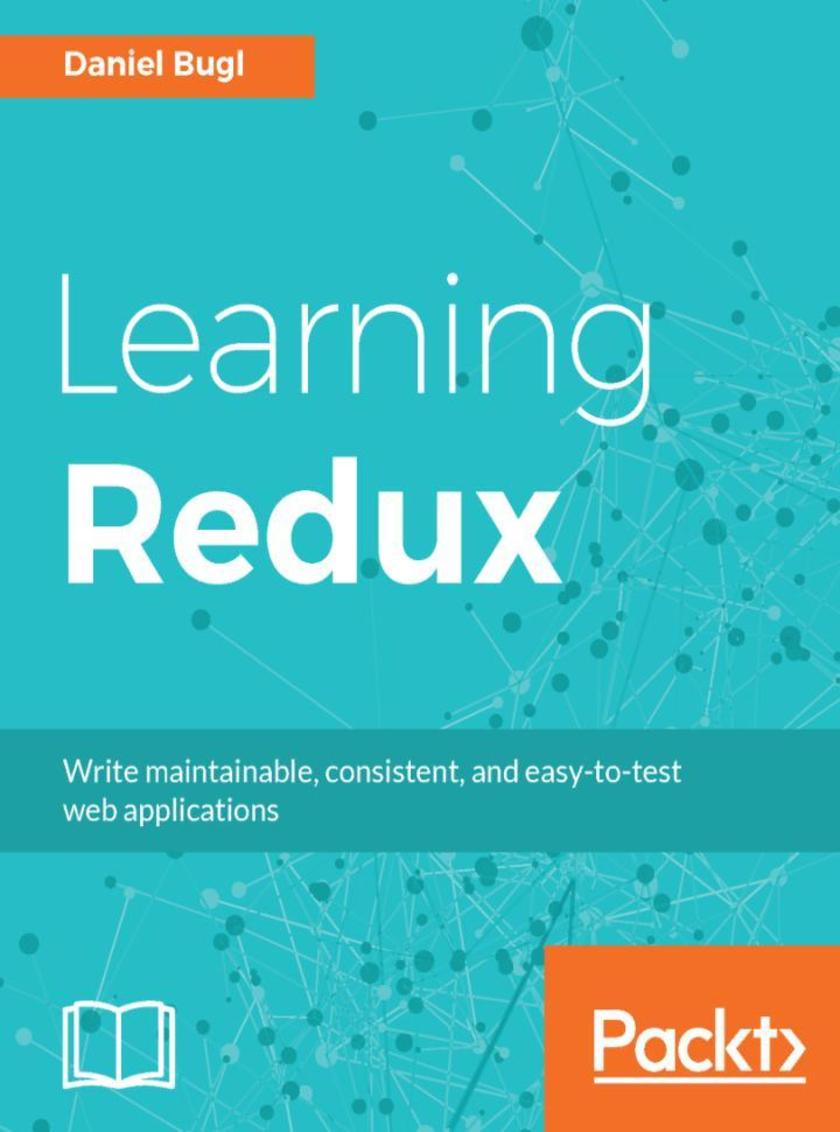
Learning Redux
¥90.46
Build consistent web apps with Redux by easily centralizing the state of your application. About This Book ? Write applications that behave consistently, run in different environments (client, server and native), and are easy to test ? Take your web apps to the next level by combining the power of Redux with other frameworks such as React and Angular ? Uncover the best practices and hidden features of Redux to build applications that are powerful, consistent, and maintainable Who This Book Is For This book targets developers who are already fluent in JavaScript but want to extend their web development skills to develop and maintain bigger applications. What You Will Learn ? Understand why and how Redux works ? Implement the basic elements of Redux ? Use Redux in combination with React/Angular to develop a web application ? Debug a Redux application ? Interface with external APIs with Redux ? Implement user authentication with Redux ? Write tests for all elements of a Redux application ? Implement simple and more advanced routing with Redux ? Learn about server-side rendering with Redux and React ? Create higher-order reducers for Redux ? Extend the Redux store via middleware In Detail The book starts with a short introduction to the principles and the ecosystem of Redux, then moves on to show how to implement the basic elements of Redux and put them together. Afterward, you are going to learn how to integrate Redux with other frameworks, such as React and Angular. Along the way, you are going to develop a blog application. To practice developing growing applications with Redux, we are going to start from nothing and keep adding features to our application throughout the book. You are going to learn how to integrate and use Redux DevTools to debug applications, and access external APIs with Redux. You are also going to get acquainted with writing tests for all elements of a Redux application. Furthermore, we are going to cover important concepts in web development, such as routing, user authentication, and communication with a backend server After explaining how to use Redux and how powerful its ecosystem can be, the book teaches you how to make your own abstractions on top of Redux, such as higher-order reducers and middleware. By the end of the book, you are going to be able to develop and maintain Redux applications with ease. In addition to learning about Redux, you are going be familiar with its ecosystem, and learn a lot about JavaScript itself, including best practices and patterns. Style and approach This practical guide will teach you how to develop a complex, data-intensive application leveraging the capabilities of the Redux framework.
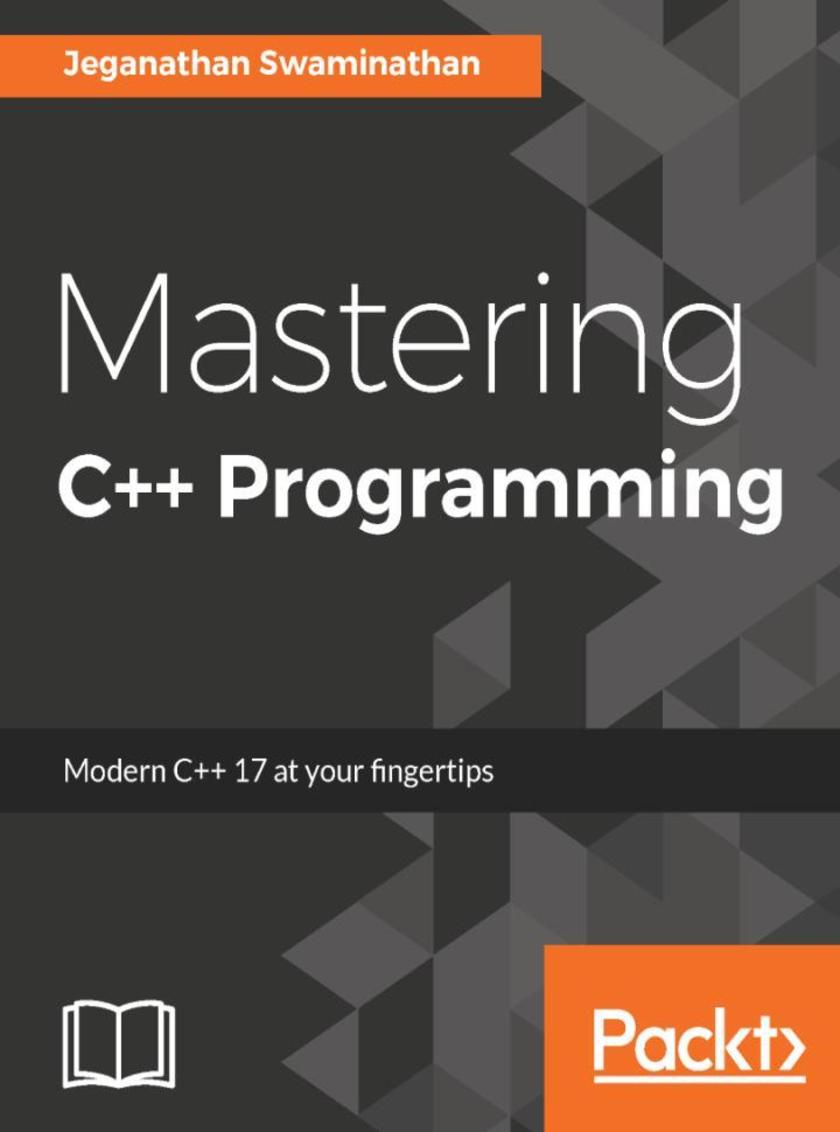
Mastering C++ Programming
¥90.46
Take your C++ coding to the next level by leveraging the latest features and advanced techniques to building high performing, reliable applications. About This Book ? Get acquainted with the latest features in C++ 17 ? Take advantage of the myriad of features and possibilities that C++ offers to build real-world applications ? Write clear and expressive code in C++, and get insights into how to keep your code error-free Who This Book Is For This book is for experienced C++ developers. If you are a novice C++ developer, then it’s highly recommended that you get a solid understanding of the C++ language before reading this book What You Will Learn ? Write modular C++ applications in terms of the existing and newly introduced features ? Identify code-smells, clean up, and refactor legacy C++ applications ? Leverage the possibilities provided by Cucumber and Google Test/Mock to automate test cases ? Test frameworks with C++ ? Get acquainted with the new C++17 features ? Develop GUI applications in C++ ? Build portable cross-platform applications using standard C++ features In Detail C++ has come a long way and has now been adopted in several contexts. Its key strengths are its software infrastructure and resource-constrained applications. The C++ 17 release will change the way developers write code, and this book will help you master your developing skills with C++. With real-world, practical examples explaining each concept, the book will begin by introducing you to the latest features in C++ 17. It encourages clean code practices in C++ in general, and demonstrates the GUI app-development options in C++. You’ll get tips on avoiding memory leaks using smart-pointers. Next, you’ll see how multi-threaded programming can help you achieve concurrency in your applications. Moving on, you’ll get an in-depth understanding of the C++ Standard Template Library. We show you the concepts of implementing TDD and BDD in your C++ programs, and explore template-based generic programming, giving you the expertise to build powerful applications. Finally, we’ll round up with debugging techniques and best practices.By the end of the book, you’ll have an in-depth understanding of the language and its various facets. Style and approach This straightforward guide will help you level up your skills in C++ programming, be it for enterprise software or for low-latency applications like games. Filled with real-world, practical examples, this book will take you gradually up the steep learning curve that is C++.
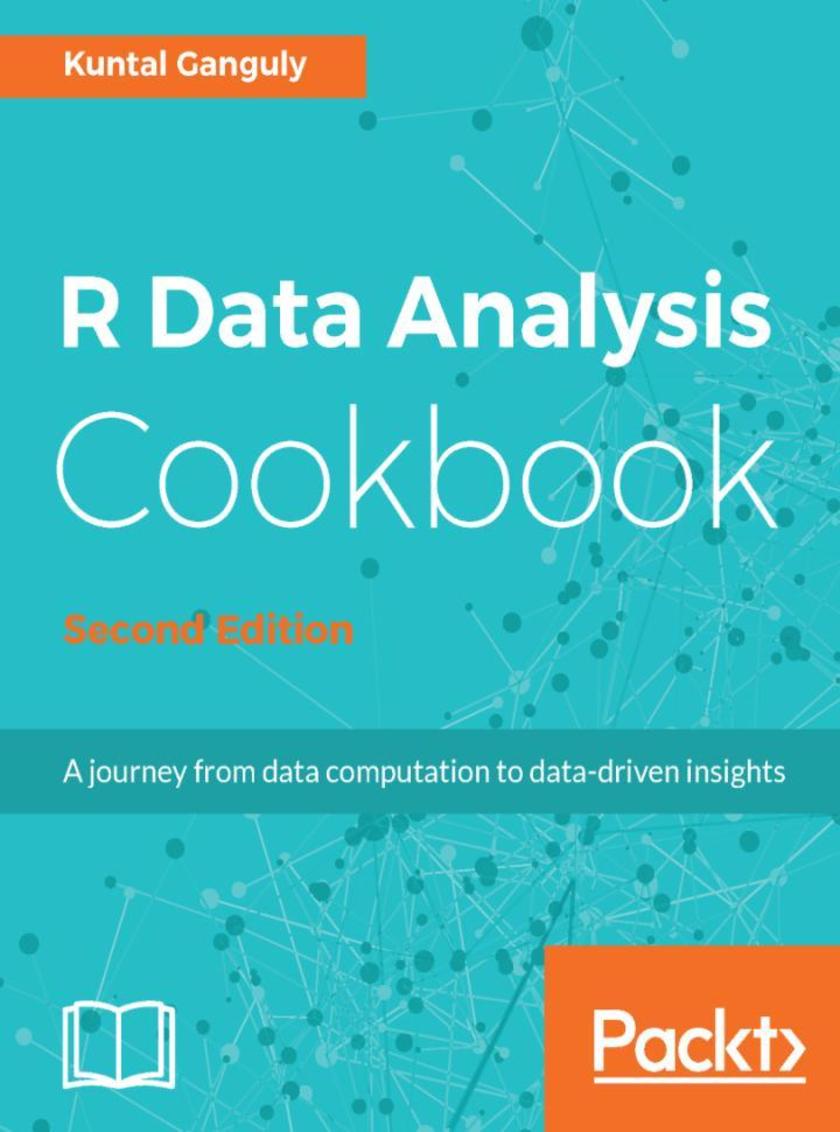
R Data Analysis Cookbook - Second Edition
¥90.46
Over 80 recipes to help you breeze through your data analysis projects using R About This Book ? Analyse your data using the popular R packages like ggplot2 with ready-to-use and customizable recipes ? Find meaningful insights from your data and generate dynamic reports ? A practical guide to help you put your data analysis skills in R to practical use Who This Book Is For This book is for data scientists, analysts and even enthusiasts who want to learn and implement the various data analysis techniques using R in a practical way. Those looking for quick, handy solutions to common tasks and challenges in data analysis will find this book to be very useful. Basic knowledge of statistics and R programming is assumed. What You Will Learn ? Acquire, format and visualize your data using R ? Using R to perform an Exploratory data analysis ? Introduction to machine learning algorithms such as classification and regression ? Get started with social network analysis ? Generate dynamic reporting with Shiny ? Get started with geospatial analysis ? Handling large data with R using Spark and MongoDB ? Build Recommendation system- Collaborative Filtering, Content based and Hybrid ? Learn real world dataset examples- Fraud Detection and Image Recognition In Detail Data analytics with R has emerged as a very important focus for organizations of all kinds. R enables even those with only an intuitive grasp of the underlying concepts, without a deep mathematical background, to unleash powerful and detailed examinations of their data. This book will show you how you can put your data analysis skills in R to practical use, with recipes catering to the basic as well as advanced data analysis tasks. Right from acquiring your data and preparing it for analysis to the more complex data analysis techniques, the book will show you how you can implement each technique in the best possible manner. You will also visualize your data using the popular R packages like ggplot2 and gain hidden insights from it. Starting with implementing the basic data analysis concepts like handling your data to creating basic plots, you will master the more advanced data analysis techniques like performing cluster analysis, and generating effective analysis reports and visualizations. Throughout the book, you will get to know the common problems and obstacles you might encounter while implementing each of the data analysis techniques in R, with ways to overcoming them in the easiest possible way. By the end of this book, you will have all the knowledge you need to become an expert in data analysis with R, and put your skills to test in real-world scenarios. Style and Approach ? Hands-on recipes to walk through data science challenges using R ? Your one-stop solution for common and not-so-common pain points while performing real-world problems to execute a series of tasks. ? Addressing your common and not-so-common pain points, this is a book that you must have on the shelf
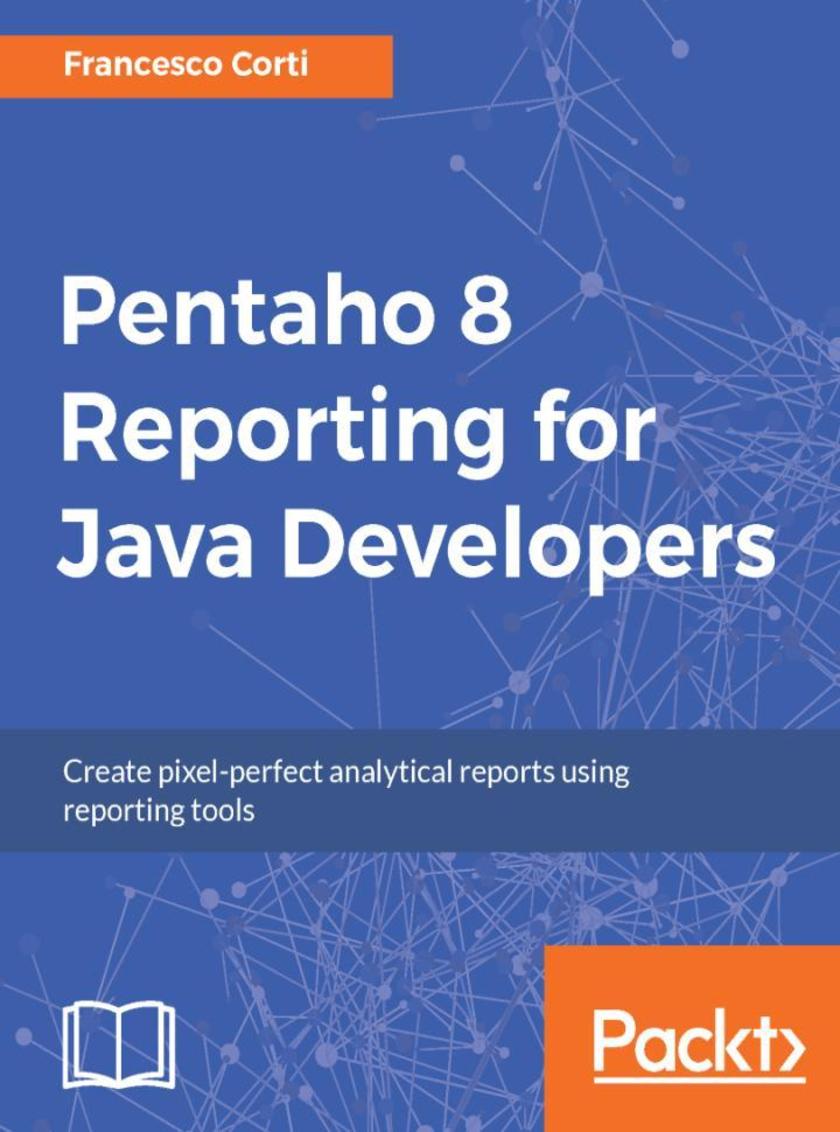
Pentaho 8 Reporting for Java Developers
¥90.46
Create reports and solve common report problems with minimal fuss. About This Book ? Use this unique book to master the basics and advanced features of Pentaho 8 Reporting. ? A book showing developers and analysts with IT skills how to create and use the best possible reports using the Pentaho platform. ? Written with a very practical approach: full of tutorials and practical examples (source code included). Who This Book Is For This book is written for two types of professionals and students: Information Technologists with a basic knowledge of Databases and Java Developers with medium seniority. Developers will be interested to discover how to embed reports in a third-party Java application. What You Will Learn ? The basics of Pentaho Reporting (Designer and SDK) and its initial setup. ? Develop the most attractive reports on top of a wide range of data sources. ? Perform detailed customization of layout, parameterization, internationalization, behaviors, and more for your custom reports developed with Pentaho Reporting. ? Integrate Pentaho reports into third-party Java application with full control over interactions, layout, and behavior in general. ? Use Pentaho reports in the other components of the Pentaho Suite (BA Platform and PDI). In Detail This hands-on tutorial, filled with exercises and examples, introduces the reader to a variety of concepts within Pentaho Reporting. With screenshots that show you how reports look at design time as well as how they should look when rendered as PDF, Excel, HTML, Text, Rich-Text-File, XML, and CSV, this book also contains complete example source code that you can copy and paste into your environment to get up-and-running quickly. Updated to cover the features of Pentaho 8, this book will teach you everything you need to know to build fast, efficient reports using Pentaho. If your interest lies in the technical details of creating reports and you want to see how to solve common reporting problems with a minimum of fuss, this is the book for you. Style and approach A step-by-step guide covering technical topics relating to environments, best practices, and source code, to enable the reader to assemble the best reports and use them in existing Java applications.
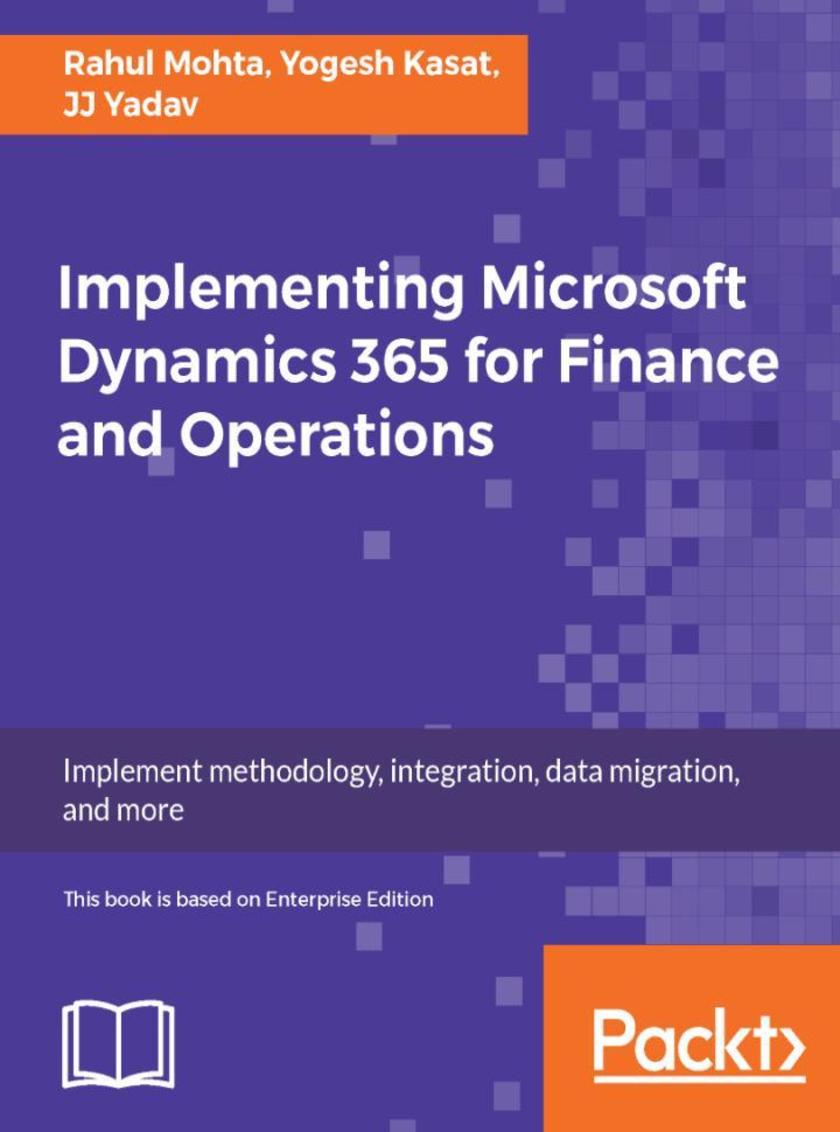
Implementing Microsoft Dynamics 365 for Finance and Operations
¥107.90
Harness the power of Dynamics 365 Operations and discover all you need to implement it About This Book ? Master all the necessary tools and resources to evaluate Dynamics 365 for Operations, implement it, and proactively maintain it. ? Troubleshoot your problems effectively with your Dynamics 365 partner ? Learn about architecture, deployment choices, integration, configuration and data migration, development, testing, reporting and BI, support, upgrading, and more. Who This Book Is For This book is for technology leaders, project managers solution architects, and consultants who are planning to implement, are in the process of implementing, or are currently upgrading to Dynamics 365 for Operations. This book will help you effectively learn and implement Dynamics 365 for Operations. What You Will Learn ? Learn about Microsoft Dynamics 365, it's offerings, plans and details of Finance and Operations, Enterprise edition ? Understand the methodology and the tool, architecture, and deployment options ? Effectively plan and manage configurations and data migration, functional design, and technical design ? Understand integration frameworks, development concepts, best practices, and recommendations while developing new solutions ? Learn how to leverage intelligence and analytics through Power BI, machine learning, IOT, and Cortana intelligence ? Master testing, training, going live, upgrading, and how to get support during and after the implementation In Detail Microsoft Dynamics 365 for Finance and Operations, Enterprise edition, is a modern, cloud-first, mobile-first, ERP solution suitable for medium and large enterprise customers. This book will guide you through the entire life cycle of a implementation, helping you avoid common pitfalls while increasing your efficiency and effectiveness at every stage of the project. Starting with the foundations, the book introduces the Microsoft Dynamics 365 offerings, plans, and products. You will be taken through the various methodologies, architectures, and deployments so you can select, implement, and maintain Microsoft Dynamics 365 for Finance and Operations, Enterprise edition. You will delve in-depth into the various phases of implementation: project management, analysis, configuration, data migration, design, development, using Power BI, machine learning, Cortana analytics for intelligence, testing, training, and finally deployment, support cycles, and upgrading. This book focuses on providing you with information about the product and the various concepts and tools, along with real-life examples from the field and guidance that will empower you to execute and implement Dynamics 365 for Finance and Operations, Enterprise edition. Style and approach This book is a step-by-step guide focusing on implementing Dynamics 365 Operations solutions for your organization.
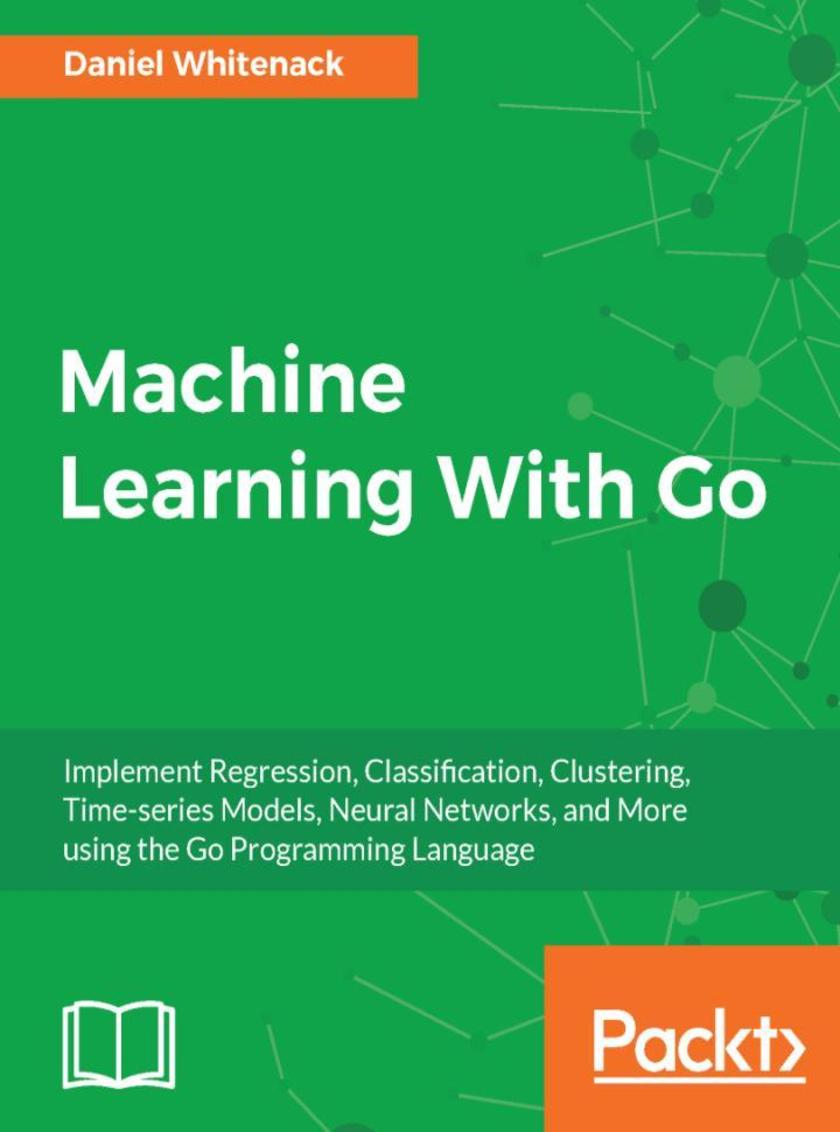
Machine Learning With Go
¥90.46
Build simple, maintainable, and easy to deploy machine learning applications. About This Book ? Build simple, but powerful, machine learning applications that leverage Go’s standard library along with popular Go packages. ? Learn the statistics, algorithms, and techniques needed to successfully implement machine learning in Go ? Understand when and how to integrate certain types of machine learning model in Go applications. Who This Book Is For This book is for Go developers who are familiar with the Go syntax and can develop, build, and run basic Go programs. If you want to explore the field of machine learning and you love Go, then this book is for you! Machine Learning with Go will give readers the practical skills to perform the most common machine learning tasks with Go. Familiarity with some statistics and math topics is necessary. What You Will Learn ? Learn about data gathering, organization, parsing, and cleaning. ? Explore matrices, linear algebra, statistics, and probability. ? See how to evaluate and validate models. ? Look at regression, classification, clustering. ? Learn about neural networks and deep learning ? Utilize times series models and anomaly detection. ? Get to grip with techniques for deploying and distributing analyses and models. ? Optimize machine learning workflow techniques In Detail The mission of this book is to turn readers into productive, innovative data analysts who leverage Go to build robust and valuable applications. To this end, the book clearly introduces the technical aspects of building predictive models in Go, but it also helps the reader understand how machine learning workflows are being applied in real-world scenarios. Machine Learning with Go shows readers how to be productive in machine learning while also producing applications that maintain a high level of integrity. It also gives readers patterns to overcome challenges that are often encountered when trying to integrate machine learning in an engineering organization. The readers will begin by gaining a solid understanding of how to gather, organize, and parse real-work data from a variety of sources. Readers will then develop a solid statistical toolkit that will allow them to quickly understand gain intuition about the content of a dataset. Finally, the readers will gain hands-on experience implementing essential machine learning techniques (regression, classification, clustering, and so on) with the relevant Go packages. Finally, the reader will have a solid machine learning mindset and a powerful Go toolkit of techniques, packages, and example implementations. Style and approach This book connects the fundamental, theoretical concepts behind Machine Learning to practical implementations using the Go programming language.
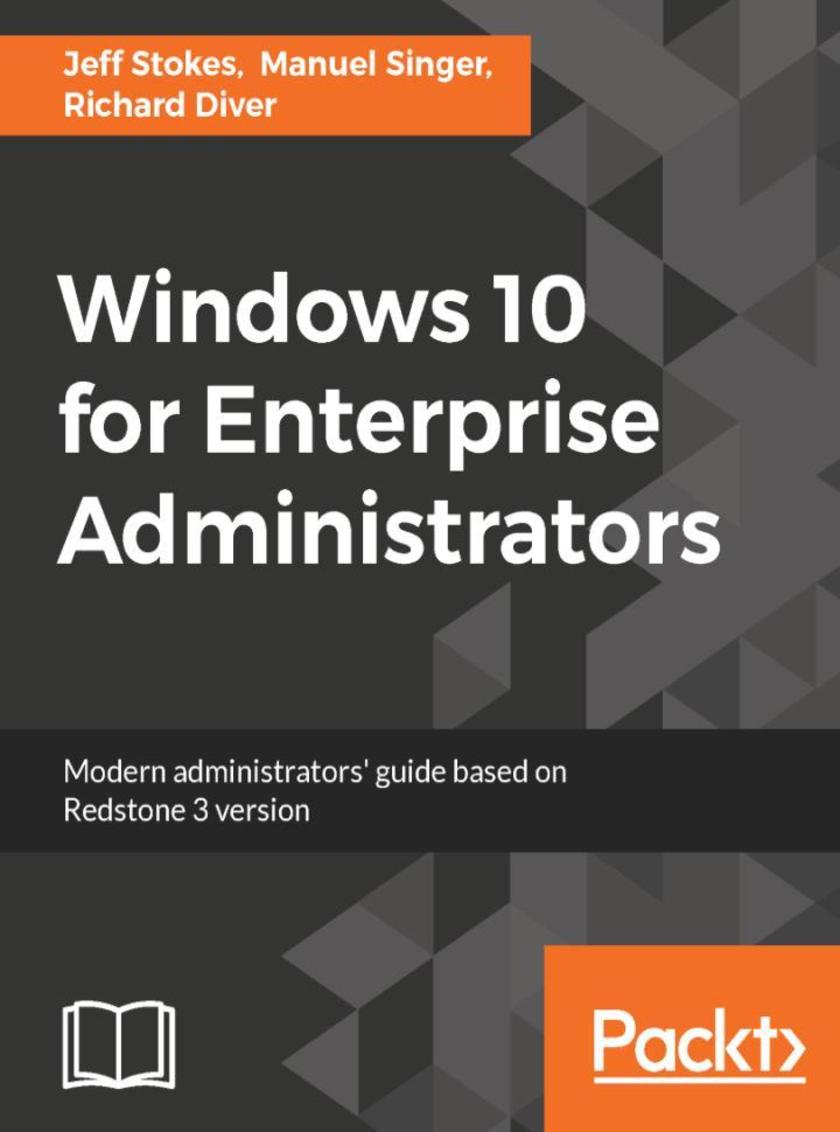
Windows 10 for Enterprise Administrators
¥80.65
Learn the art of configuring, deploying, managing and securing Windows 10 for your enterprise. About This Book ? Enhance your enterprise administration skills to manage Windows 10 Redstone 3 ? Get acquainted with configuring Azure Active Directory for enabling cloud-based services and Remote Server Admin Tools for managing Windows Server ? Provide enterprise-level security with ease using the built-in data loss prevention of Windows 10 Who This Book Is For If you are a system administrator who has been given the responsibility of administering and managing Windows 10 Redstone 3, then this book is for you. If you have deployed and managed previous versions of Windows, it would be an added advantage. What You Will Learn ? Understand the remote access capabilities ? Use third-party tools to deploy Windows 10 ? Customize image and user Interface experience ? Implement assigned access rights ? Configure remote administration ? Manage Windows 10 security ? Work with Azure AD and Intune management In Detail Microsoft’s launch of Windows 10 is a step toward satisfying the enterprise administrator’s needs for management and user experience customization. This book provides the enterprise administrator with the knowledge needed to fully utilize the advanced feature set of Windows 10 Enterprise. This practical guide shows Windows 10 from an administrator's point of view. You'll focus on areas such as installation and configuration techniques based on your enterprise requirements, various deployment scenarios and management strategies, and setting up and managing admin and other user accounts. You’ll see how to configure Remote Server Administration Tools to remotely manage Windows Server and Azure Active Directory. Lastly, you will learn modern Mobile Device Management for effective BYOD and how to enable enhanced data protection, system hardening, and enterprise-level security with the new Windows 10 in order to prevent data breaches and impede attacks. By the end of this book, you will know the key technologies and capabilities in Windows 10 and will confidently be able to manage and deploy these features in your organization. Style and approach This step-by-step guide will show you how to configure, deploy, manage, and secure the all new Windows 10 Redstone 3 for your enterprise.




 购物车
购物车 个人中心
个人中心



